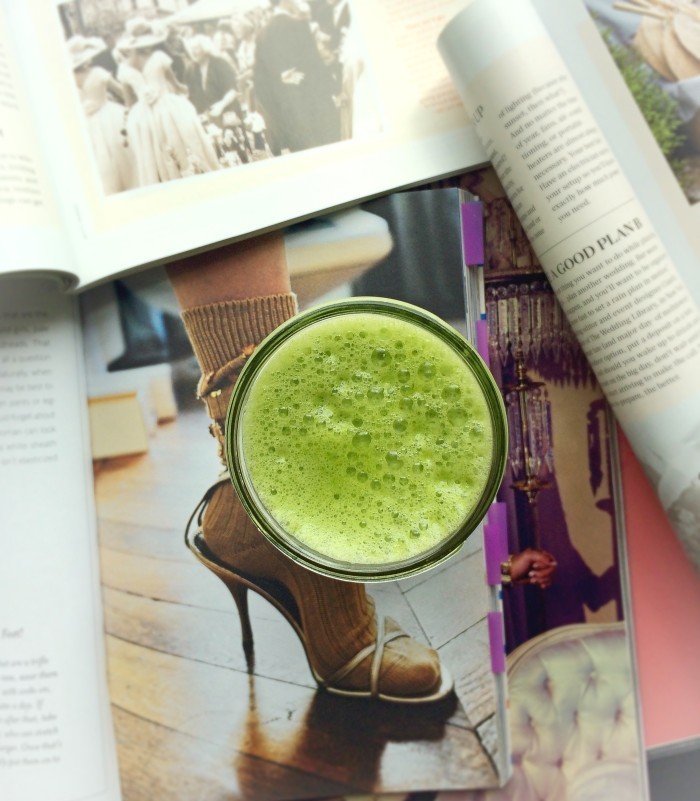Centrifugal vs. Masticating: Which juicer is right for your juicing needs?
Fresh juice is one of my favorite treats. When my husband and I traveled across the country two summers ago, one of the ways we “entertained” ourselves was by hunting down juice bars in unlikely places that weren’t too far out of the way. (The first juice with cucumber that I ever had was in Hood River, Oregon, and I’ve been putting cucumbers in my homemade juice ever since!) Part of the joy of drinking juice was just thinking about how nutritious it was, and I imagined my body getting “happier” with each sip.
I’m probably not alone in my juice love, but many of us don’t live next door to a juice bar, and even if we do, the cost of fresh juice adds up quickly when we’re not making it ourselves. Fortunately, anybody can make juice from the convenience of her own kitchen but before diving in, it’s important to consider what kind of juicer will best suit your needs. This article breakdowns the major differences between the two most common types of juicers—centrifugal and masticating.
Centrifugal
These juicers use a fast-spinning metal blade and centrifugal force to separate juice from flesh and fiber. Juice comes from one end, and pulp is spit out from another end.
Pros: A centrifugal juicer makes juice rather quickly, and you likely won’t need to chop your produce up into itty bitty pieces because the chutes are rather large. Centrifugal juicers are fairly easy to operate, and often incur a low investment, starting at around $50. These juicers create rather “clear” juice with minimal pulp.
Cons: The force and fast-spinning blades create friction and heat, which can destroy some of the enzymes in the produce. Furthermore, this method of juicing exposes the nutrients to air, which can oxidize them, i.e., reduce their antioxidant content. Juice made with a centrifugal juicer must be consumed within 30 minutes of juicing before the nutrients further degrade. Also, many centrifugal juicers do not make the most of their pulp, meaning that you may have to put the pulp back into the juicer to extract maximum juice OR add more produce to your juice (which can get costly over time). Centrifugal juicers tend to be as nosy as a blender or coffee grinder, so warn your cat before making juice in one of these.
Best for:
The occasional juice drinker or juice dabbler (I probably fall into this category).
Juices that may be exposed to heat anyway (like those put in soups).
Juices whose nutritional content isn’t their main draw (like those put in cocktails).
Masticating
These juicers operate by slowly “chewing” and grinding produce to squeeze out the juice.
Pros: Masticating juicers do not produce as much heat as centrifugal juicers. They also tend to extract more juice from the produce, giving you more bang for your buck. Because the nutrients in this juice aren’t as oxidized or damaged in the juicing process, the juice tends to have a longer shelf life (about 5 days!). The lower speed of the masticating juicer handles leafy greens and wheatgrass while centrifugal juicers tend extract a bit of juice from juices then spit large portions of the leaf into the pulp receptacle. Juice from masticating juicers tends to taste better (according to reviewers). Reviewers also report that clean-up is easier with a masticating juicer. You can make nut butter, sorbets, and nut milks in a masticating juicers—awesome!
Cons: Masticating juicers tend to be pricier, the cheaper ones starting at around $300. Juices may be thicker and perhaps more pulpy (this is not actually a con for many people—I love pulp!). Since the chutes on masticating juicers tend to be smaller, more cutting and chopping of produce is required, which takes more time and effort on your part.
Best for:
The serious juice drinker.
Juice drinkers concerned about getting maximum nutrition.
Juice drinkers interesting in bottling their juice and drinking it at a later time.
Juice drinkers wanting to consume juice from leafy greens.
Those interested in making nut milks and butters as well as juice.
A note on purchasing pricey kitchen equipment: To avoid paying full price for a juicer or blender, look for factory refurbished options. These pieces may have some cosmetic imperfections (i.e. superficial scratches) but operate as good as new and even come in new packaging. I’ve saved major $$ by digging a little deeper to find refurbished equipment.
Do you have a preferred juicer? What has been your home juicing experience?
More juice tips: How to Make the Best Low Sugar Green Juice Recipe
Detoxifying Turmeric and Wheatgrass Juice
Photo: Mary Hood Luttrell

